How to identify a link is safe?
Today "malicious" links appear more and more and are shared through social networks at a "dizzying" speed. Just click on a "malicious" link that can bring you potential dangers.
One of the most popular and most popular social networks is Facebook. This is also one of the "path" for hackers to share malicious links. Just click on the "fancy" links with a pretty impressive title and a huge "view", then all the information of the user almost fell into the hands of hackers. User information is used by hackers for a number of purposes. One of the most recognizable goals is the Facebook account of the "hacked" user.
If you accidentally click on a malicious link and have "hacked" your Facebook account, you can refer to how to get back your Facebook account here.
The advice for you is that before clicking on a link, you need to make sure that the link is a safe and non-implicit link. However, the problem is how to know if the link is safe or not? That is also the topic that Network Administrator will introduce to you in the article below.
1. How to check the target attribute of the link?
Before proceeding to check if the link is safe, you first need to learn how to copy the target attribute of a link. This is very important, it will notify you of the URL of the site you want to check.
All you need is to right click on the link you want to check. A menu is displayed on the screen.
Choose: Copy link address (if using Google Chrome browser), or Copy link location (Firefox browser) or Copy shortcut (if using Internet Explorer).
The target attribute of the link will be copied on your computer's memory, you can paste it anywhere.
Simply, you just need to point to the link, and look at the bottom of the browser (on Windows) and see which website is loading, which is where you will actually be taken when clicking on the link.
2. Check the link is safe or not?
Use one of the following services and tools to check if the link is safe:
2.1. Norton Safe Web
Norton Safe Web gives you an overview to easily identify the link is safe or not? In addition Norton Safe web also provides you with a summary of the "threats" that the program finds on your link by referring to factors such as Computer Threats, Identify Threats and Annoynce.
2.2. SiteAdvisor (by McAfee)
McAfee will tell you the question of whether your link is safe by clicking the Download anything on your computer button.
In addition McAfee also provides you with a list of out-bound links that contain your link.
2.3. Sucuri
Sucuri provides you with a detailed report on the website with the domain name you provided. In addition Sucuri also provides you with a 'black list' of websites, 'expired' software used by the site, the presence of malicious software (malware), malicious Javascipt, iFrames malicious, detecting unusual things, the presence of spam, .
2.4. Unmask Parasites
Give you a report to determine if the link is safe or not?
2.5. Browser Defender
Browser Defender helps you identify links safely or not quickly. If you suspect that Browser Defender's "decision" is "wrong", you can report to the site domain.
2.6. Online Link Scan
Online Link Scan is a collection of all the features of the above mentioned tools. Online Link Scan will scan and give you reports to make you aware of the link is safe or not?
2.7. Googe Safe Browsing Diagnostic
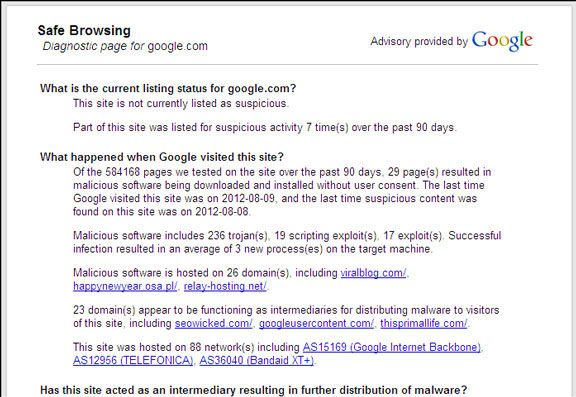
Google Safe Browsing Diagnostic was released a few years ago. The tool provides users with detailed reports about domains or web links. Developed by Google thanks to Safe Browsing API, a part of the search engine infrastructure, users can rely on the tool.
To use, you add the URL of the site you want to check after the http://www.google.com/safebrowsing/diagnostic?site= address. Google will provide diagnostic information for the site of 4 points:
- Status of the current service list.
- What happened when Google visited this site?
- Has this site acted as an intermediary to spread more malware?
- Does the site store malware?
Note that the information provided by Google is based only on the site status for the last 90 days.
2.8. URL Void
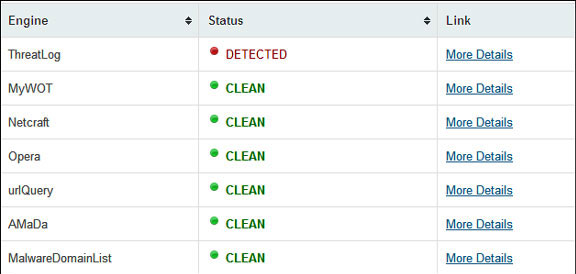
URL Void is a reputable web scanning program that analyzes a web address with multiple engines (about 30) and blacklisted domains, such as Google SafeBrowsing, Norton SafeWeb and MyWOT to detect any potentially dangerous website. . Users must manually insert a link and URLVoid will list the positive or negative detection status with the egine used. Users can check threat list (threat log) for details.
2.9. UnMask Parasites
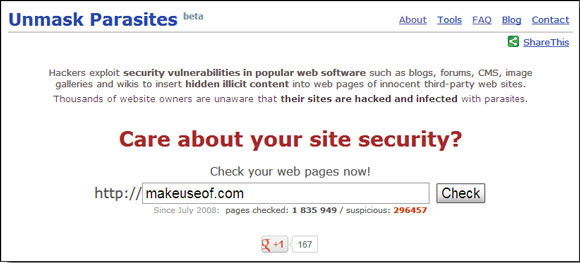
Unmask Parasites is a simple security tool to scan a site and let you know if the site carries spam links, malicious code or link redirection. Often websites are compromised and the malicious code is inserted without the administrator's knowledge. Unmask Parasites download links (web pages) provided, analyzing HTML code, especially external links, iframe and JavaScript. This is really a quick and easy solution.
2.10. PhishTank
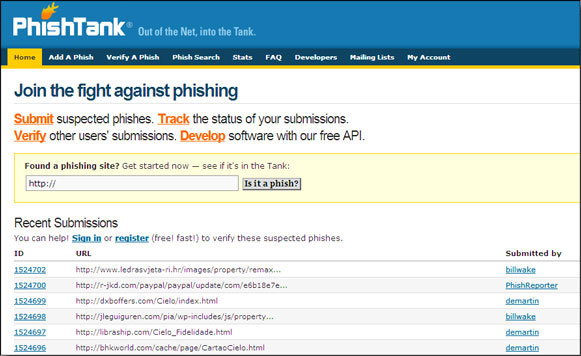
Phishing is relatively easy to spot when looking at the URL. Banks and other sensitive sites often have to implement fraud prevention measures of this type. One of those ways is to use indexing of phishing sites kept in PhishTank. Users can also add phishing sites to the list. Remember that PhishTank is not a security tool. This is a free service created by OpenDNS.
2.11. Dr.Web Anti-Virus Link Checker
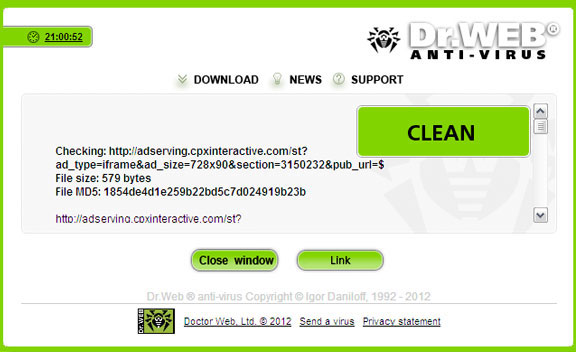
Dr.Web Anti-Virus Link Checker is an add-on for both Chrome, Firefox, Opera and IE. The utility uses Dr.Web's online antivirus engine to scan for malicious content on a download link. The utility also automatically scans downloaded content and scans quickly on all social network links Facebook, Vk.com, Google+. This service has been available since 2003, and is updated periodically.
2.12. UnShorten.it
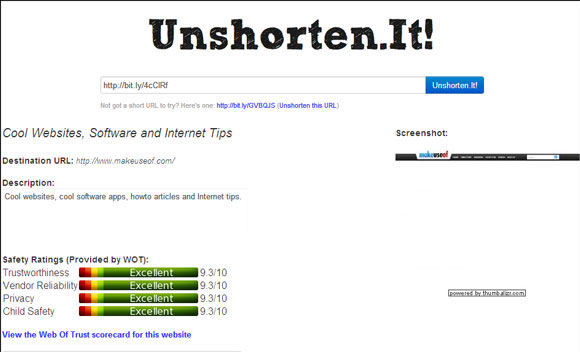
Short URLs appear dense on the Web today. The only thing is that users do not know exactly what is hidden behind that short URL. It is possible to use a URL extension program, but even so, it is impossible to know whether the stretched URL itself is safe or not. UnShorten.it combines both functions: short URL extension and URL scans via WOT (Web of Trust) tools to return card users a reliable rating. Simply paste the short URL into the program and the service will return the direct URL of the destination website, the website description and the WOT review with the destination website thumbnail. UnShorten.it also provides extensions for Chrome and Firefox.
2.13. VirusTotal
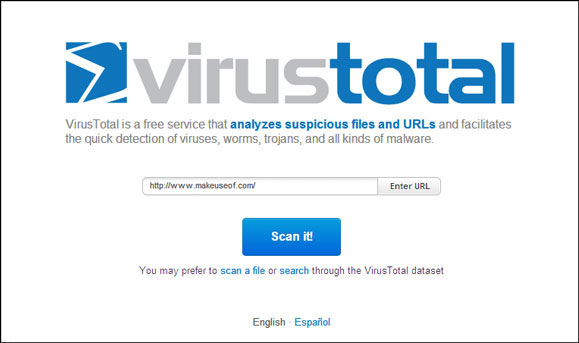
VirusTotal provides two tools for users. A tool to scan the suspect file and a program that scans the site inspection link before clicking. VirusTotal also uses a series of antivirus engines, website scanners, file analysis tools and URLs that return detailed reports. For example, some engines will display a very clear message about whether the URL is in a certain botnet. The tool is updated every 15 minutes.
2.14. Comodo Site Inspector
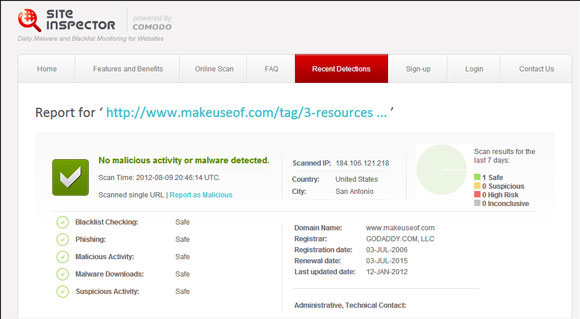
This is a free malware detection and security tool so you can check a URL or webmasters can use it to set up daily checks. This test takes a bit of time because basically Comodo will download all the specified pages and run them in a sandboxed browser environment.
The above 8 URL checking tools are just a small number of many other link testing tools. They will help to create safety shields for your computer.
Refer to some of the following articles:
- Change DNS usage to make surfing faster
- How to disable / enable Windows Firewall in Windows 7, 8
- Searching for browsing history has been deleted
Good luck!
You should read it
- Trick to check the true link of the shortlink quickly
- How to know for sure a safe file before downloading?
- How to check the link security embedded in the email
- TP-Link Archer C80 Review: The basic router offers great speed
- How to use Link Fox to shorten the website link
- Summary of high speed Leech link site
 Some basic website security rules
Some basic website security rules Useful software for managing files, folders, email, Internet and computer protection
Useful software for managing files, folders, email, Internet and computer protection How to enable Site Isolation security feature on Chrome
How to enable Site Isolation security feature on Chrome Trick to prevent 100% virus infection from USB, memory card, phone to computer
Trick to prevent 100% virus infection from USB, memory card, phone to computer How to check geographical location via IP
How to check geographical location via IP How to change DNS to surf faster, speed up Internet
How to change DNS to surf faster, speed up Internet